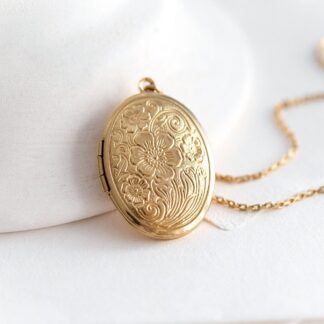Mais d'où vient le collier locket ?
Plus communément appelé médaillon, et souvent fabriqué en or ou en argent, le bijou locket était traditionnellement utilisé pour conserver des souvenirs précieux tels que des photographies, des mèches de cheveux ou même des portraits miniatures d'êtres chers.
Voir en vidéo
L'histoire de ce bijou de sentiment s'étend jusqu'à l'Antiquité, mais c'est aux XVe, XVIe et XVIIe siècles qu'il a véritablement pris de l'importance. Il était à cette époque, souvent scellé, dissimulant précieusement son contenu. Principalement porté par les femmes, le médaillon contenait généralement une image de leur enfant et de leur mari. Les photos n’existant pas à l’époque, il s’agissait plutôt de portraits peints à la main.
Au fil des XVIIIe et XIXe siècles, le locket a gagné en popularité, devenant accessible à diverses classes sociales et offert lors d'occasions importantes telles que les baptêmes, les mariages et les funérailles.


Un exemple marquant de son importance au cours de cette période est celui associé à la reine Victoria, qui portait à son bracelet, huit médaillons, chacun contenant une mèche de cheveux de ses enfants.
Aujourd'hui, bien que le bijou locket ait évolué, il demeure fidèle à sa vocation première : garder près du cœur les souvenirs précieux et les êtres chers.
Découvrez notre collection de colliers lockets à graver, fabriqués en France, sur GRAAZIE.COM.
Crédits : Bizuteria BLOSSOM @ blossomjewelry.pl | Bijoux TED & MAG @tedandmagjewelry | Trademark Antiques - Bijoux @trademarkantiques | @lucaspinhel | Musée et galerie d'art eBolton | www.thairghs.com | thevintagecompactshop.com

 ?>)






